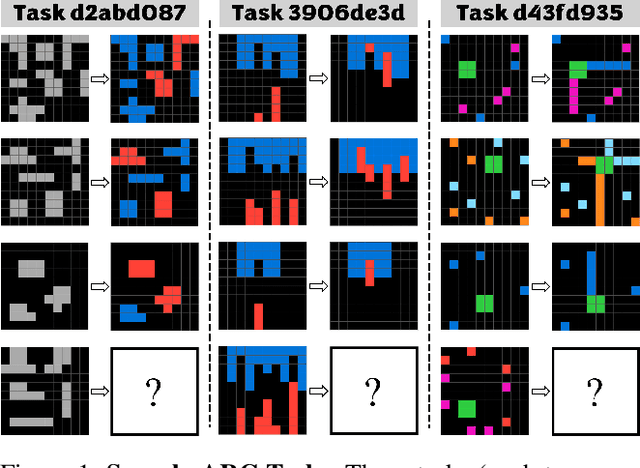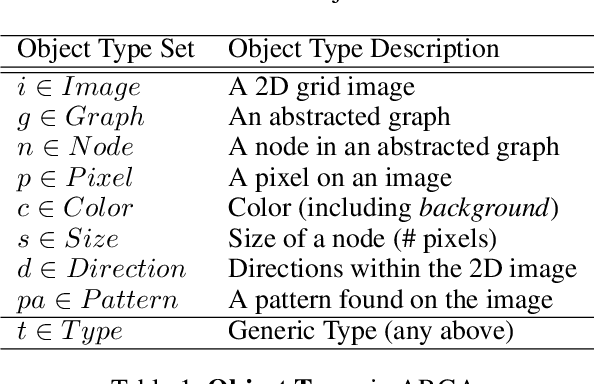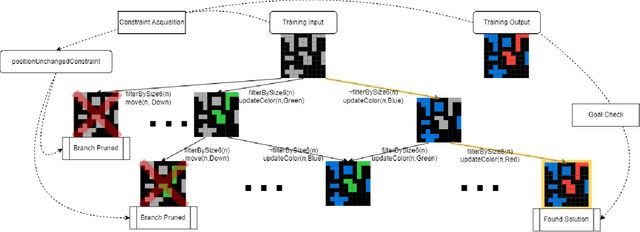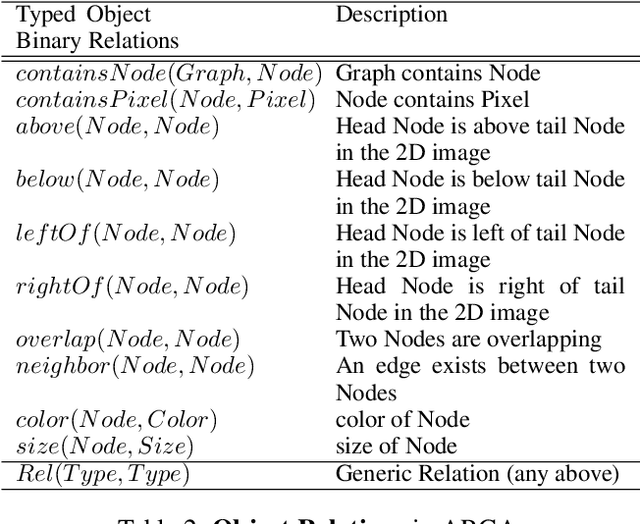Yudong Xu
LLMs and the Abstraction and Reasoning Corpus: Successes, Failures, and the Importance of Object-based Representations
May 26, 2023Abstract:Can a Large Language Model (LLM) solve simple abstract reasoning problems? We explore this broad question through a systematic analysis of GPT on the Abstraction and Reasoning Corpus (ARC), a representative benchmark of abstract reasoning ability from limited examples in which solutions require some "core knowledge" of concepts such as objects, goal states, counting, and basic geometry. GPT-4 solves only 13/50 of the most straightforward ARC tasks when using textual encodings for their two-dimensional input-output grids. Our failure analysis reveals that GPT-4's capacity to identify objects and reason about them is significantly influenced by the sequential nature of the text that represents an object within a text encoding of a task. To test this hypothesis, we design a new benchmark, the 1D-ARC, which consists of one-dimensional (array-like) tasks that are more conducive to GPT-based reasoning, and where it indeed performs better than on the (2D) ARC. To alleviate this issue, we propose an object-based representation that is obtained through an external tool, resulting in nearly doubling the performance on solved ARC tasks and near-perfect scores on the easier 1D-ARC. Although the state-of-the-art GPT-4 is unable to "reason" perfectly within non-language domains such as the 1D-ARC or a simple ARC subset, our study reveals that the use of object-based representations can significantly improve its reasoning ability. Visualizations, GPT logs, and data are available at https://khalil-research.github.io/LLM4ARC.
Graphs, Constraints, and Search for the Abstraction and Reasoning Corpus
Oct 18, 2022



Abstract:The Abstraction and Reasoning Corpus (ARC) aims at benchmarking the performance of general artificial intelligence algorithms. The ARC's focus on broad generalization and few-shot learning has made it impossible to solve using pure machine learning. A more promising approach has been to perform program synthesis within an appropriately designed Domain Specific Language (DSL). However, these too have seen limited success. We propose Abstract Reasoning with Graph Abstractions (ARGA), a new object-centric framework that first represents images using graphs and then performs a search for a correct program in a DSL that is based on the abstracted graph space. The complexity of this combinatorial search is tamed through the use of constraint acquisition, state hashing, and Tabu search. An extensive set of experiments demonstrates the promise of ARGA in tackling some of the complicated tasks of the ARC rather efficiently, producing programs that are correct and easy to understand.
 Add to Chrome
Add to Chrome Add to Firefox
Add to Firefox Add to Edge
Add to Edge